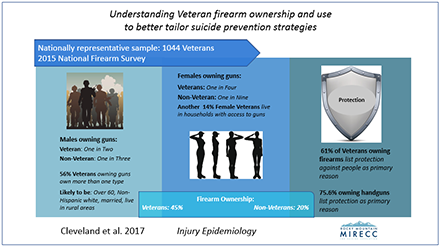MIRECC / CoE
Rocky Mountain MIRECC for VA Suicide Prevention - Joseph A Simonetti, MD MPH

Updated: 5 March 2019
Biography
 Joseph A Simonetti, MD MPH
Joseph A Simonetti, MD MPH- Title: Clinician Investigator
Contact:
720-723-6491
joseph.simonetti@va.gov - Biography: Dr. Simonetti earned his Medical Degree from the Ohio State University in 2008 and completed his training in Internal Medicine at the University of Pittsburgh prior to serving as Chief Medical Resident from 2011-2012. He then moved to Seattle where he completed an NRSA health services research fellowship, worked as a senior research fellow in the VA’s Patient Aligned Care Team (PACT) National Demonstration Lab, and earned his Masters of Public Health degree from the University of Washington.
- Dr. Simonetti joined the VA Eastern Colorado Healthcare System in 2016 where he serves as a teaching attending within the Hospital Medicine Group and works as an investigator with Rocky Mountain MIRECC and the Denver-Seattle Center for Veteran-Centered and Value-Driven Care.
- Research Interests: Dr. Simonetti’s research focuses on reducing the burden of intentional and unintentional firearm injuries nationally. He joined the Rocky Mountain MIRECC to adapt his expertise in firearm injury prevention to strategies that can be used to mitigate the high burden of suicide, particularly firearm-related suicide, among American Veterans. His current focus is on developing Veteran-centered approaches to facilitating lethal means safety as a suicide prevention strategy.
- Dr. Simonetti also has an appointment with the Denver-Seattle Center for Veteran-Centered and Value-Driven Care and has continued his work with the PACT Demonstration Lab in Seattle. His work includes improving Veterans’ access to services within the VHA system, using geospatial methods to investigate the effect of neighborhood environment on Veterans’ health outcomes, and improving our understanding of the prevalence and drivers of burnout among VHA primary care employees.
Recent Publications
- Simonetti JA, Azrael D, Miller M. Firearm Storage Practices and Risk Perceptions Among a Nationally Representative Sample of U.S. Veterans With and Without Self-Harm Risk Factors. Suicide Life Threat Behav. 2018 Apr 15. doi: 10.1111/sltb.12463. [Epub ahead of print] PubMed PMID: 29658142.
- Despite the disproportionate use of firearms in Veteran suicides and the well-established link between firearm access and suicide, little is known about how Veterans store their firearms or what they think about the relationship between firearm access and suicide risk. Using data from 2015 nationally representative online survey (response rate 60.9%), we compare characteristics of Veteran firearm owners with and without self-harm risk factors with respect to how they store their firearms and their beliefs about suicide risk related to firearms. Overall, one in three U.S. Veteran firearm owners store household firearms loaded and unlocked, one in twenty believe that a firearm increases household suicide risk, and one in four consider their loaded and unlocked firearm to be inaccessible to suicidal household members. Storage practices and risk perceptions are similar among those with and without self-reported suicide risk factors. Affecting risk perceptions may be a critical aspect of interventions addressing lethal means safety among U.S. Veterans.
- Rowhani-Rahbar A, Azrael D, Lyons VH, Simonetti JA, Miller M. Loaded Handgun Carrying Among US Adults, 2015. Am J Public Health. 2017 Dec;107(12):1930-1936. doi: 10.2105/AJPH.2017.304072. Epub 2017 Oct 19. PubMed PMID: 29048957.
- OBJECTIVES: To determine the frequency of loaded handgun carrying among US adult handgun owners, characterize those who carry, and examine concealed carrying by state concealed carry laws. METHODS: Using a nationally representative survey of US adults in 2015, we asked handgun owners (n=1444) about their past-30-day carrying behavior. RESULTS: Among surveyed handgun owners, 24% (95% confidence interval[CI]=21%, 26%) carried loaded handguns monthly, of whom 35% (95% CI=29%, 41%) did so daily; 82% (95% CI=77%, 86%) carried primarily for protection. The proportion of handgun owners who carried concealed loaded handguns in the past 30 days was 21% (95% CI=12%, 35%) in unrestricted states, 25% (95% CI=21%, 29%) in shall issue-no discretion states, 20% (95% CI=16%, 24%) in shall issue-limited discretion states, and 9% (95% CI=6%, 15%) in may-issue states. CONCLUSIONS: We estimate that 9 million US adult handgun owners carry loaded handguns monthly, 3 million do so every day, and most report protection as the main carrying reason. Proportionally fewer handgun owners carry concealed loaded handguns in states that allow issuing authorities substantial discretion in granting carrying permits.
- Cleveland EC, Azrael D, Simonetti JA, Miller M. Firearm ownership among American veterans: findings from the 2015 National Firearm Survey. Inj Epidemiol. 2017 Dec 19;4(1):33. doi: 10.1186/s40621-017-0130-y. PubMed PMID: 29256160; PubMed Central PMCID: PMC5735043.
- BACKGROUND: While the majority of veteran suicides involve firearms, no contemporary data describing firearm ownership among US veterans are available. This study uses survey data to describe the prevalence of firearm ownership among a nationally representative sample of veterans, as well as veterans' reasons for firearm ownership. METHODS: A cross-sectional, nationally representative web-based survey conducted in 2015. RESULTS: Nearly half of all veterans own one or more firearms (44.9%, 95% CI 41.3-48.6%), with male veterans more commonly owning firearms than do female veterans (47.2%, 95% CI 43.4-51.0% versus 24.4%, 95%CI 15.6-36.1%). Most veteran firearm owners own both handguns and long guns (56.5%, 95% CI 51.1-61.8%); a majority cite protection as a primary reason for firearm ownership (63.1%, 95% CI 58.2-67.8%). CONCLUSIONS: The current study is the first to provide detailed, nationally representative information about firearm ownership among U.S. veterans. Better understanding firearm ownership among veterans can usefully inform ongoing suicide prevention efforts aiming to facilitate lethal means safety among vulnerable veterans during at-risk periods.
- Read the full article on PMC
- Visual Abstract:

- Simonetti JA, Theis MK, Rowhani-Rahbar A, Ludman EJ, Grossman DC. Firearm Storage Practices in Households of Adolescents With and Without Mental Illness. J Adolesc Health. 2017 Nov;61(5):583-590. doi: 10.1016/j.jadohealth.2017.05.017. Epub 2017 Aug 16. PubMed PMID: 28822681.
- PURPOSE: Safe firearm storage practices are associated with a lower risk of self-inflicted injury and death. Whether such practices and relevant beliefs differ between households of adolescents with and without mental illness is unknown. METHODS: We used survey and administrative data to perform a two-stage cross-sectional study of parents/guardians of adolescents who were 11-17 years, enrolled in a managed care plan in 2004 and living in a household with a firearm. Multivariable Poisson models compared the prevalence of three firearm storage practices between households of adolescents with (depression or bipolar disorder) and without mental illness (no psychiatric or substance use disorder), including whether all firearms were locked, any firearms were loaded, and all firearms were locked and unloaded. We used chi-square tests to compare responses to Likert items assessing beliefs relevant to storage practices between households. RESULTS: Adolescents with mental illness were present in 141 (50.5%) of 279 study households. Their mean age was 14.5 years, and 54.8% were male. The mean age of parent/guardian respondents was 47.0 years, and 17.9% were male. Respondents from nearly 70% of households reported that all household firearms were stored locked and unloaded. In unadjusted and adjusted analyses, there were no significant differences in the prevalence of three firearm storage practices or in beliefs relevant to those practices between households of adolescents with and without mental illness. CONCLUSIONS: These findings add to a growing body of evidence suggesting that firearm storage practices do not differ based on household mental health risk factors for self-harm. Published by Elsevier Inc. KEYWORDS: Adolescent; Firearms; Injuries; Mental health; Suicide
- Rowhani-Rahbar A, Lyons VH, Simonetti JA, Azrael D, Miller M. Formal firearm training among adults in the USA: results of a national survey. Inj Prev. 2017 Jul 11. pii: injuryprev-2017-042352. doi: 10.1136/injuryprev-2017-042352. [Epub ahead of print] PubMed PMID: 28698176.
- Despite broad support for policies requiring that prospective firearm owners receive training before acquiring a firearm, little is known about the scope and content of firearm training in the USA. Nationally representative surveys conducted in 1994 estimated that 56%-58% of the US firearm owners had received formal firearm training. We conducted a nationally representative survey in 2015 (n=3932; completion proportion=55%) to update those estimates and characterise training contents. 61% of firearm owners and 14% of non-owners living with a firearm owner reported having received formal firearm training. The most commonly reported combination of training topics was safe handling, safe storage and preventing accidents. 15% of firearm owners reported that their training included information about suicide prevention. The proportion of the US firearm owners with formal firearm training has not meaningfully changed since two decades ago. Training programme contents vary widely. Efforts to standardise and evaluate the effectiveness of firearm training are warranted. KEYWORDS: Firearm; Suicide/Self?Harm; Surveys; Training
- Simckes MS, Simonetti JA, Moreno MA, Rivara FP, Oudekerk BA, Rowhani-Rahbar A. Access to a Loaded Gun Without Adult Permission and School-Based Bullying. J Adolesc Health. 2017 Sep;61(3):329-334. doi: 10.1016/j.jadohealth.2017.03.022. Epub 2017 Jun 24. PubMed PMID: 28652055.
- PURPOSE: Gun access and bullying are risk factors for sustaining or perpetrating violence among adolescents. Our knowledge of gun access among bullied students is limited. METHODS: We used data on students, aged 12-18 years, from the 2011 and 2013 School Crime Supplement to the National Crime Victimization Survey to assess the association between self-reported bullying victimization (traditional and cyber) and access to a loaded gun without adult permission. Prevalence ratios (PRs) and confidence intervals (CIs) were obtained from multivariable Poisson regression using the Taylor series after controlling for student age, sex, family income, public/private school, and race. RESULTS: Of 10,704 participants, 4.2% (95% CI: 3.8%-4.6%) reported gun access. Compared with nonbullied students, those who reported traditional bullying (PR = 2.2; 95% CI: 1.7-2.4), cyberbullying (PR = 2.8; 95% CI: 1.6-4.9), and both (PR = 5.9; 95% CI: 4.6-7.7) were more likely to also report gun access. CONCLUSIONS: Adolescents who experience bullying, particularly those who report both traditional bullying and cyberbullying, are more likely to report access to a loaded gun without adult permission. These findings highlight the importance of developing interventions focused on these modifiable risk factors for preventing self-directed or interpersonal violence among youth. Copyright © 2017 Society for Adolescent Health and Medicine. Published by Elsevier Inc. All rights reserved. KEYWORDS: Adolescent; Bullying; Firearms; Schools
- Simonetti JA, Rowhani-Rahbar A, King C, Bennett E, Rivara FP. Evaluation of a community-based safe firearm and ammunition storage intervention. Inj Prev. 2017 Jun 22. pii: injuryprev-2016-042292. doi: 10.1136/injuryprev-2016-042292. [Epub ahead of print] PubMed PMID: 28642248.
- BACKGROUND: Safe firearm storage practices are associated with a lower risk of unintentional and self-inflicted firearm injuries among household members, though many firearms remain unlocked and/or loaded. OBJECTIVES: Conduct a preliminary evaluation of a community-based firearm safety intervention and assess participants' preferences for firearm locking devices and their comfort with potential firearm safety counsellors. DESIGN/METHODS: Baseline event and follow-up surveys among adult participants to assess changes in firearm storage practices, including whether all household firearms were stored locked, all were unloaded, all ammunition was locked, and a composite measure assessing whether all firearms were locked and unloaded and all ammunition was stored locked. RESULTS: A total of 206 out of 415 participants completed both surveys and were included. Nearly 9 in 10 respondents preferred the firearm lock box rather than a trigger lock. At follow-up, a significantly greater proportion reported that all household firearms were locked (+13.7%) and unloaded (+8.5%) and a non-significantly greater proportion reported that all ammunition was locked (+6.3%). A significantly greater proportion reported practising all three safe firearm and ammunition storage practices at follow-up (+12.6%). A majority reported they would be comfortable or very comfortable discussing firearm safety with various safety counsellors, though women were less likely to do so than men. CONCLUSION: This intervention that included distribution of a free, participant-selected locking device improved safe firearm storage practices among participants. Differences in participant preferences for devices and safety counsellors suggest that a 'one size fits all' approach may be inadequate in affecting population-level storage practices. © Article author(s) (or their employer(s) unless otherwise stated in the text of the article) 2017. All rights reserved. No commercial use is permitted unless otherwise expressly granted. KEYWORDS: firearms; injury prevention; suicide; unintentional injury
Media
Rocky Mountain Short Takes on Suicide Prevention: Promoting Lethal Means Safety to Prevent Veteran Suicide with Joe Simonetti, MD
17 January 2018

What is it about Lethal Means Safety (LMS) that makes a difference in suicide prevention? LMS is about increasing the distance between thoughts of suicide and action. In this week’s episode, we are joined by Dr. Joseph Simonetti, MD, MPH, physician and suicide prevention researcher with the Rocky Mountain MIRECC. Dr. Simonetti guides us through the fundamentals of lethal means safety, why it’s important, and provides suggestions on how to ensure that conversations about lethal means safety are Veteran-centered.
We focus specifically on firearms considering their disproportionate lethality and that firearm-related injuries account for more than 2/3 of Veteran suicides (more than in the general US population). During high-risk periods, temporary off-site storage of firearms may be the safest option by allowing an individual the opportunity to ride out an emotional crisis, connect with other resources, and for other evidence-based treatments to take effect. Dr. Simonetti dispels common misconceptions about discussing firearm safety in the context of collaborative mental health care. His poignant anecdote about what he does to help suicidal Veteran patients with easy access to loaded guns reminds us why lethal means safety is critical for effective suicide safe care.
Resources
Rocky Mountain MIRECC Lethal Means Safety
VA Suicide Risk Management Consultation Program
Firearm ownership among American veterans: findings from the 2015 National Firearm Survey
Evaluation of a community-based safe firearm and ammunition storage intervention
Yes, You Can: Physicians, Patients, and Firearms
Temporary Transfer of Firearms From the Home to Prevent Suicide: Legal Obstacles and Recommendations
Increasing the distance between thoughts and action is one step in preventing suicide
Podcast Talking to Patients about Firearm Safety with Dr. Emmy Betz
You can find all our podcasts at iTunes on your iPhone or on your Android device. You can also find all our episodes at our host site. Other places where you can find our podcasts include: iHeart Radio, and Blubrry.
Categories: Suicide Prevention


























